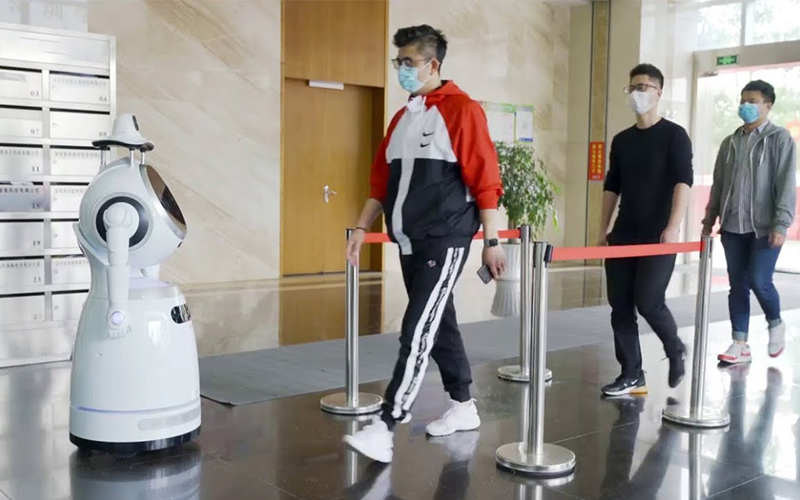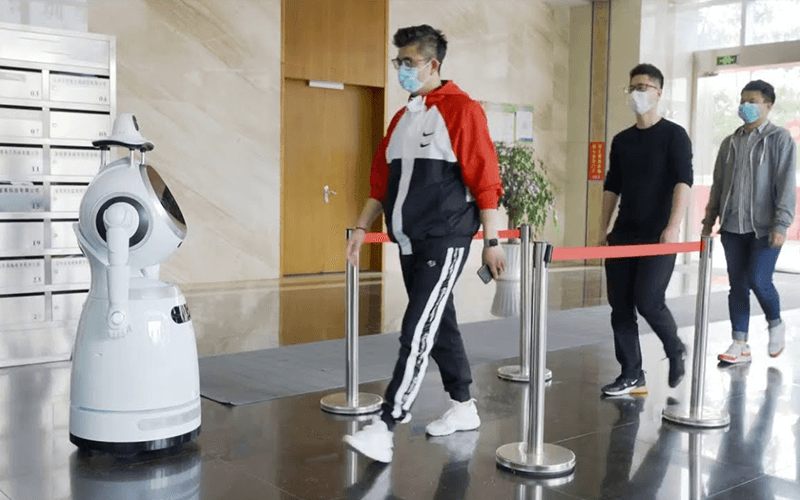How Robots Can Help With Our Healthcare Labor Needs
Jan 26, 2022
By Evelyn Long
 The COVID-19 pandemic changed healthcare technology forever by bringing medical robots to center stage. Today’s healthcare facilities are under historic levels of strain. Meeting the needs of patients while protecting the safety of care staff has become the industry’s biggest concern.
The COVID-19 pandemic changed healthcare technology forever by bringing medical robots to center stage. Today’s healthcare facilities are under historic levels of strain. Meeting the needs of patients while protecting the safety of care staff has become the industry’s biggest concern.
Robots may be the future of healthcare. Years of innovation are bringing useful new robots to medical facilities just when they are needed most. These robots have the skills to meet today’s most urgent healthcare labor needs.
Transforming Telehealth
Telehealth was one of the most immediate shifts in healthcare following the onset of the COVID-19 pandemic. Online doctors’ appointments and virtual therapy allow millions to safely get the care they need. With robots, telehealth technology can service countless other care needs, even surgery.
Studies have identified robots as key instruments in treating patients during the COVID-19 pandemic. For example, the first identified COVID-19 patient in the U.S. was attended to by a remotely controlled robot that could complete checkups on the patient without breaking medical isolation. The same remote control method could be used in the operating room to conduct surgeries via telehealth.
Surgical robots have actually been in development for several years. In fact, the first remote surgery, a gallbladder removal, was completed in 2001 by surgeons in New York City operating a robot in France. While these robots are not yet capable of all surgical procedures, they can complete many core processes and even some full surgeries. 5G is expected to improve “telesurgery” with stronger connections, making it available to even more patients.
Protecting Healthcare Workers
Among the most pressing concerns throughout the coronavirus pandemic was the risk faced by frontline healthcare workers every day. Caring for COVID-19 patients requires close and prolonged contact, putting doctors and nurses at exceptionally high risk of contracting the virus themselves. Medical robots can help protect healthcare workers from exposure, allowing them to safely care for more patients.
One of the first applications for healthcare robots during the pandemic was cleaning. UV disinfection robots protect hospital staff by autonomously disinfecting spaces. Due to the nature of UV cleaning, even the robots are completely contactless. These robots are now gaining popularity elsewhere in addition to healthcare facilities, such as schools and offices.
There is still room for advancement in assistive robotics for healthcare workers. There are dozens of tasks that healthcare workers are responsible for with each and every patient. More development will be needed for robots to successfully tackle these tasks. For example, robots need to be highly dexterous to complete tasks like nose swabbing or IV injection.
The materials used for these robots are being researched, as well. For example, studies have found that copper has greater antimicrobial properties than several other metals, making it a potentially advantageous surface material for robots that will be in close contact with patients.
Filling in Staffing Gaps
Going into 2022, several countries, including the U.S., faced a critical shortage of nurses and other healthcare staff. In fact, the U.S. shifted to hiring thousands of nurses from other countries to help address the shortage. Many nurses were simply overwhelmed and burnt out after two years of an ongoing global pandemic.
Resolving the shortage of care staff in the long term will require innovative solutions. Robotics is a top candidate. Healthcare centers can benefit from robotic assistance in many areas beyond the operating room and maintenance. For example, Cruzr, the customer-service robot, can help staff medical reception areas complete temperature scans and even check for mask compliances. Cruzr can also assist with two-way video connections to enable remote health appointments.
Some researchers think robots could even someday step in as AI supplements to nurses themselves. In 2019, a team of researchers from Trinity College Dublin tested their care robot “Stevie” in a U.S. retirement home. The results were innovative and inspiring. The robot lived alongside the residents of the retirement home, helping to care for them and socializing with them. Stevie could respond to voice commands and even have conversations with people. Many of the residents ended up enjoying his company, playing games, and telling stories with the robot.
On a more technical level, Stevie could also alert retirement home staff in the event of a medical emergency. This particular function is extremely valuable. Stevie can safely monitor patients 24/7, filling in crucial gaps left by staffing shortages. Robots like this could very well be the future of elder and patient care.
Delivering Innovative Care With Robots
Medical robots are no longer confined to the pages of science fiction. These robots are taking on critical roles in the global healthcare system, even helping to save lives. While there is still a long way to go, innovation in medical robotics has never been more inspired than it has in the wake of the COVID-19 pandemic.
When the whole global community is faced with a common threat, everyone comes together to contribute to the advancements that make history. Healthcare robotics is already earning its place in the long line of technological revolutions.
Discover more about Healthcare and Robots with RobotLAB!

About the author
Evelyn Long is the editor-in-chief of Renovated and a writer with experience covering green technology and construction for publishers like NCCER and BUILD.










 Too much to read? Don't have time?
Too much to read? Don't have time? 

.webp?width=124&height=124&name=image%20(1).webp)
.webp?width=169&height=87&name=image%20(2).webp)













